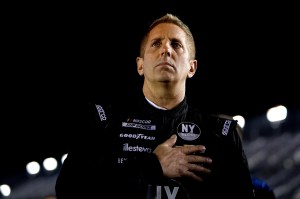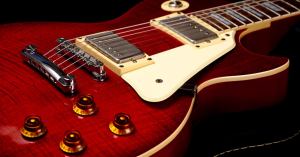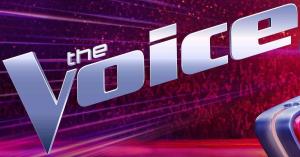No one will ever debate the significance of Hulk Hogan’s iconic heel turn at Bash at the Beach 1996. In the years that passed, several names have taken varying degrees of credit for turning Vince McMahon’s savior into Ted Turner’s money-printing villain. However, according to Eric Bischoff, there’s only one man who deserves praise for the idea.
When Hogan came to WCW in 1994, the red and yellow of Hulkamania resumed its crowd-pleasing course with its new southern fan base. However, after a few revolutions, it became apparent that wrestling fans’ taste had evolved into a more realistic product. So when Razor Ramon and Diesel hopped from WWE to WCW and used their government names (Scott Hall and Kevin Nash), it was a breaking of the fourth wall that fans adored.
Videos by PopCulture.com
Eric Bischoff, the on and off screen President of WCW, was behind a lot of this shift and wanted to double down on edgier characters. This opened up discussion about creating a stable with Hall, Nash, and a third, blockbuster name.
The prospective group, what would later be known as the n.W.o needed to make a splash – and this is where the story starts to get manipulated.
A trip down Google will tell you that WCW wanted Lex Luger to be the third man. That story changed to Sting being the consummate candidate But apparently, when Hulk Hogan was approached with the idea and hated it. Not only did Hogan not want to turn heel, but never saw himself as a member of a group. Even more, Hogan was rumored to have tyrannical creative control over his character and he was so skittish about turning heel that WCW needed an emergency plan for the fateful Bash of at the Beach show.
But according to Eric Bischoff, none of that is the truth.
To help promote his appearance at Astronomicon (a Detroit based pop culture convention for which you can nab tickets here) Bischoff joined us and was happy to euthanize all of the erroneous banter surrounded Hogan’s heel turn.
So whose idea was it?
“He [Hogan] actually pitched me. I didn’t pitch him. That’s one of the things that’s fascinating to me about people’s version of wrestling history and the narrative that surrounds it is for the most part…there’s so much BS out there,” he said.
Bischoff started by addressing the myth that Hulk Hogan was a ruthless abuser of his “creative control” power.
“For example, Hulk Hogan‘s creative control, people refer to that often as some kind of ominous, challenging, difficult hurdle that I had to deal with on an ongoing basis. Nothing could be further from the truth,” he explained.
But that’s not to say Hogan didn’t have the ability to turn down proposals But according to Bischoff, that’s hardly a novel privilege.
“Shawn Michaels had creative control. Kevin Nash and Scott Hall had creative control when they were in WWE. If you don’t think Undertaker doesn’t have creative control, then you’re smoking your own crack. When you get talent at that level, you have to work with them. They have to be comfortable with what you ask them to do. It has to be a collaboration,” illustrated Bischoff.
Hogan was apparently leery of WCW creative proposals, but out of self-preservation. WCW was a budding company with little demonstrative success.
“There is a fail-safe, because WCW, when he came on board, was a young company, and quite frankly, he didn’t have a lot of confidence in a lot of the people who were in creative positions in WCW when he got there, nor should he have,” explained Bischoff. “If you look at the booking committee and the cast of characters who were writing WCW TV back in 1994 when Hogan came aboard, none of them had ever had any success in doing so.”
WCW launched The Outsiders (Hall and Nash) in May of 1996. But Hogan wouldn’t arrive and fully form the n.W.o. until July. In that gap, Hogan approached Bischoff.
“It was after Kevin Nash joined and then stories started really getting some traction, Hulk called me. He was doing a movie actually in California at the time. Called me, asked me if I had time to fly out to LA, because he had something he wanted to talk to me about, and he actually pitched me on becoming the third man. I didn’t have to pitch him,” he asserted.
There it is. While Hogan’s monster heel turn was likely a collaborative effort, it was the Hulkster himself who came up with the idea. Bischoff’s testimony also refurbishes Hogan’s backstage reputation as a man have pinned Hogan’s insatiable quest for the main event have single-handedly sunk WCW. While Hogan probably did beat his chest here and there, it’s unfair, if not foolish, to think that could ruin a company.
If you’re interested in seeing Bischoff or other WCW strongholds like Scott Hall and Kevin Nash, you can check them out February 9-11 at Detroit’s Astronomicon.
Most Viewed
-

JIMMY KIMMEL LIVE! "Jimmy Kimmel Live!" airs every weeknight at 11:35 p.m. ET and features a diverse lineup of guests that include celebrities, athletes, musical acts, comedians and human interest subjects, along with comedy bits and a house band. The guests for Tuesday, June 10 included Will Arnett, Jason Bateman and Sean Hayes ("SmartLess"), Bella Ramsey ("The Last of Us"), and musical guest HARDY. (Disney/Randy Holmes) SEAN HAYES, JASON BATEMAN, WILL ARNETT (Photo by Randy Holmes/Disney via Getty Images) -

DAYTONA BEACH, FLORIDA – FEBRUARY 16: Greg Biffle, driver of the #44 Grambling State University Chevrolet, stands on the grid during qualifying for the NASCAR Cup Series 64th Annual Daytona 500 at Daytona International Speedway on February 16, 2022 in Daytona Beach, Florida. (Photo by Sean Gardner/Getty Images) -

L-R: Todd Lasance as AFP Liaison Officer Sergeant Jim 'JD' Dempsey, Olivia Swann as NCIS Special Agent Captain Michelle Mackey, Sean Sagar as NCIS Special Agent DeShawn Jackson, Tuuli Narkle as AFP Liaison Officer Constable Evie Cooper and William McInnes as Forensic Pathologist Dr. Roy Penrose in NCIS: Sydney episode 9, season 3 streaming on Paramount+, 2025. Photo Credit: Daniel Asher Smith/Paramount+





